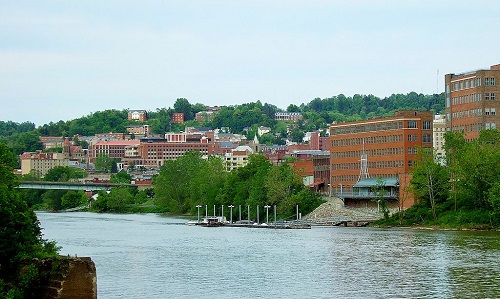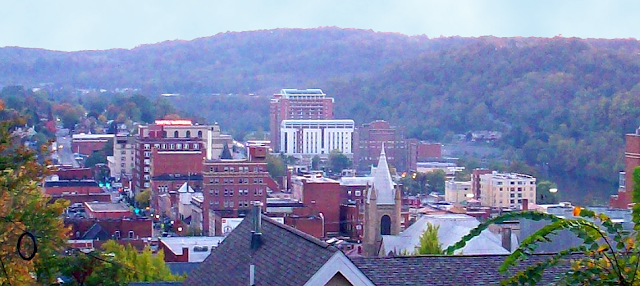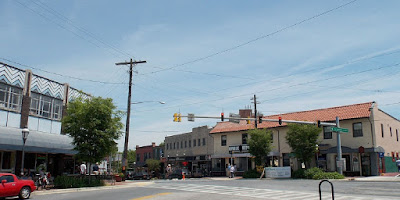Louisville St.
Louis Alton Davenport Galena Red Wing St. Paul
Louisville was founded by George Rogers Clark in 1778 becoming
Kentucky’s largest city by 1830. Strategically located at the Falls of the Ohio, Louisville was a
major commercial center with river transportation supplemented by the
Louisville & Nashville Railroad, chartered in 1850 and operating 1,800
miles by 1920.
A City of Firsts
with a Colorful Past
First in the Nation to
introduce the secret ballot and adopt zoning and planning measures to control
and shape urban growth, the first bridge designed exclusively for motor
vehicles to cross the Ohio River, and birthplace of Mary Millicent Miller, the
first woman in the United States to receive a steamboat master's license.
Famous citizens include President Zachary Taylor, two U.S. Supreme Court
Justices, naturalist John James Audubon and boxing legend Muhammad Ali.
Neighborhoods Louisville’s
earliest neighborhoods were incorporated river towns each with its own strong
sense of neighborhood identity. The area saw an influx of German and Irish
immigrants and, with the advent of streetcars, suburban growth. 1890-1930
streetcars marked the era of the beginning of the city’s suburbs combining rural
ambiance with urban amenities.
Downtown St. Louis has
undergone a myriad of changes and modifications since its days as a garment and
shoe manufacturing center. The Loft District is home to major corporations,
small businesses, residential lofts, boutiques, galleries, restaurants and
nightspots. The neighborhood’s evolution has returned the once proud historic buildings
to service.
The Gateway Arch soars 630
feet above downtown St. Louis. America’s tallest man-made monument offers a
30-mile panoramic view of the Mississippi River and the city; it was built to
honor President Thomas Jefferson and his vision of a continental United States.
The Central West End is over a
century old and full of charming sidewalk cafés, galleries, antique shops,
restaurants, boutiques and pubs. Adjacent
to the commercial district, it is characterized by tree-lined streets, stately
turn-of-the-century homes and the family apartment of playwright Tennessee
Williams, setting of his play The Glass Menagerie.
Webster Groves is an enclave
filled with century-old homes and a mélange of architectural styles with
cultural offerings, cozy restaurants, and boutiques. Over 300 of the
community’s homes are listed on the National Register of Historic Places. The
neighborhood includes the 1857 Hawken House, built by inventors of the rifle
that explorers took to the western frontier, Webster University and the
Loretto-Hilton Theatre.
Soulard is the city’s oldest
neighborhood. Its historic streets, lined with red brick townhomes, are located
five minutes south of the Arch. It is named for Antoine Soulard, a Frenchman who
surveyed colonial St. Louis and is home to historic churches, built by St.
Louis’ immigrant communities. Soulard marks its French heritage with an annual
Mardi Gras fête; revelers also flock to the neighborhood in the fall for
Oktoberfest. The Farmers Market has been operating since 1779.
Laclede’s Landing is where
19th century architecture meets 21st century dining and
entertainment. The Landing is a collection of historic riverfront warehouses
that have been converted into nightclubs and restaurants.
Alton is located 25 Miles
north of St. Louis amid the confluence of three navigable rivers, the
Mississippi, the Illinois and the Missouri, as a river trading and industrial
town whose waterfront features concrete grain silos and railroad tracks for the
shipping of grains and produce. Once the site of several brick factories,
Alton’s streets are paved in brick along with many commercial buildings located
downtown. The Great Rivers Region is accessible from six interstates, an
international airport and an Amtrak station.
Historic Trails Alton’s
Civil War and Lincoln Legacy Trail features costumed docents at sites
throughout the city revealing Alton’s legacy through personal tales along with the
Underground Railroad, where runaway slaves were hidden in caves, barns and
basements. The Alton Museum of History and Art has special exhibits relating to
Alton’s connection to the Civil War era.
Your River Towns and Neighborhoods Itinerary
on the Ohio and
Upper Mississippi
The Quad Cities area consists of Davenport and Bettendorf in Iowa, and
Moline, East Moline and Rock Island in Illinois. The region has the excitement
of a big city and the hospitality of a small town with award-winning museums
and cultural centers, internationally-recognized festivals, beautiful
riverfronts and a vibrant nightlife.

Davenport has beautiful riverfront vistas and an active downtown area
with the Figge Art and Putnam History Museums and great shopping at the North
Park Mall. Bettendorf the Library and
adjacent Family Museum provide exciting programs and storytelling. Rock Island is known for its festivals
and nightlife with Cajun food and zydeco music. Experience a downtown
architectural tour and the Broadway Historic District. Moline is one of the agricultural capitals of the world, home of
John Deere. The modern downtown area features great riverfront views and
evening entertainment with musicals performed by local actors. East Moline is home to many great events
and festivities. Empire Park is right on the Mississippi River, walk along the
riverfront trails of The Quarter or visit to the John Deere Harvester Works,
one of the world's largest combine factories.

The Galena Historic District Main Street was among
the first to require the architectural review of exterior building
modifications. Also, zoning restrictions contributed to the prevalence of brick
buildings and efforts to improve the existing infrastructure while preserving
the character of this neighborhood. Trolley Cars follow parade routes north and
south on Main Street and connect shopping to parks and wineries. Main Street in
Galena has specialty shops, restaurants and is home to DeSoto House Hotel which
opened in 1855 and is the oldest operating hotel in Illinois.
The Galena
Historic District is Listed in the National Register of Historic Places
Environment Because of the
city's proximity to the Galena River, buildings have been threatened on
numerous occasions by flooding. In 2011, over a 12-hour period, Galena received
nearly 15 inches of rain and he Galena River rose to more than twice its normal
height. A dike and floodgates were built to prevent flooding of the city.
The River Towns of southeast
Minnesota are located 60 miles from the Twin Cities. Winona is an arts and cultural center with three
major galleries that hold works by Picasso, Van Gogh and Monet that depict
lakes, oceans and rivers. The Garvin Heights overlook features panoramic views
of the town and Mississippi River Valley.
Follow the Minnesota River Valley Scenic Byway to New Ulm and experience Old World German heritage through unique
architecture, restaurants and shops selling German imports, from chocolates to
cuckoo clocks. A traditional Glockenspiel features figures from the town’s
history.
Red Wing was officially incorporated in 1857. Located in the Mississippi
River Valley and flanked by rolling bluffs, the town is a leading manufacturer
of leather, pottery and Red Wing Shoes. The town is named for the Native
American Chief who first met a US Army Officer in 1805. Tucked between
bluffs and the river, Red Wing has many historic Victorian properties and
farmhouses, including the St James hotel that dates to the 1880s. It overlooks
the Mississippi River near the 1904 Amtrak Depot, home to an art gallery and a
visitor center.
Minnesota means clear blue water from the Dakota language. Nearly 60 percent of the
population lives in the Twin Cities of Minneapolis and Saint Paul, the center
of transportation, business, industry, education, government and an
internationally renowned arts community. The remainder of the Land of 10,000 Lakes consists of western
prairies, forests in the southeast and mining, forestry, and recreation in the
North Woods.
The Twin Cities besides the Mississippi river, they are also connected
by the Metro Green Line light rail, which runs between Minneapolis’ Target
Field and St. Paul’s Union Depot, with more than 20 stops.
Performing Arts Minnesota is
home to older stages that have been restored. Fergus Falls built in 1921 as the Orpheus, and later known
as the Fergus Theatre, this venue has evolved from vaudeville to film and back
to stage performances. The Center for the Arts remodeled and updated the space
in 1995, showcasing a variety of live performances.
Summit Brewing in St Paul is
a leader of the modern Minnesota craft beer movement with the release of its
ever-popular Extra Pale Ale in 1986. Since its launch, the brewery has expanded
both its production facility in St. Paul and its brewing horizons, releasing
new year-round and limited-run beers that are among the most popular in the
Upper Midwest.

















